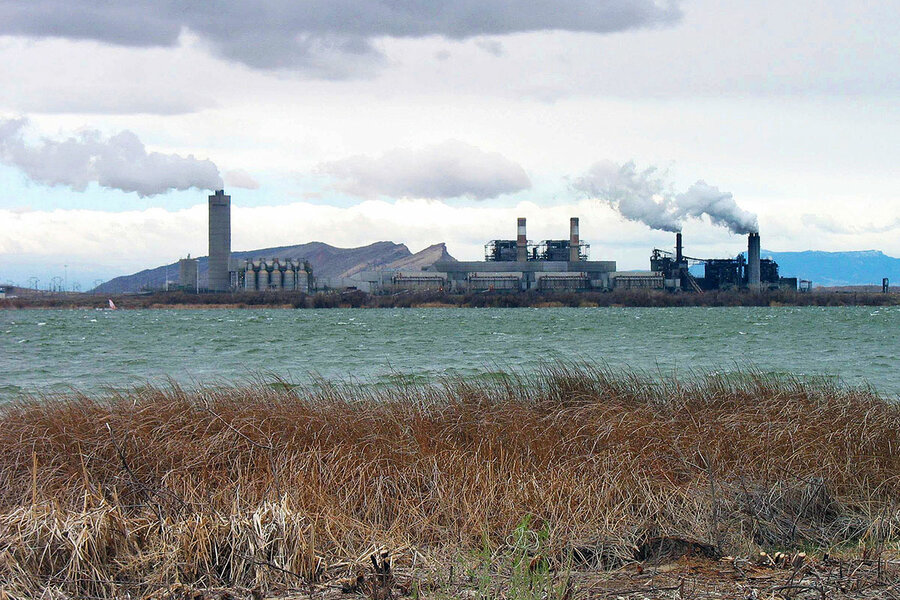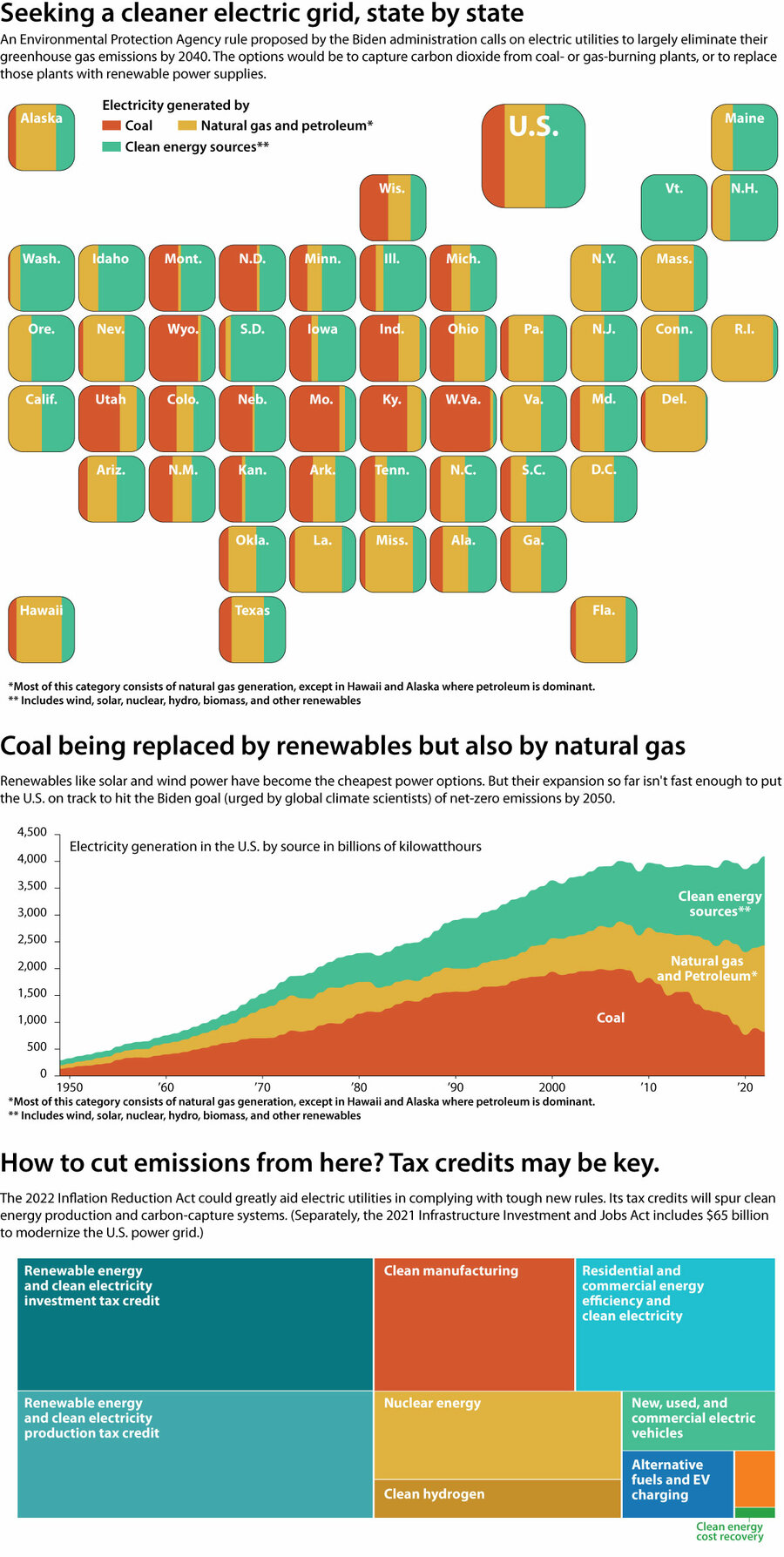Biden targets power plant emissions. How does your state stack up?
Loading...
The Biden administration is proposing new rules for electric power plants, a key step in its goal of slowing climate change by creating a net zero-emission economy.
The plan, announced May 11 by the Environmental Protection Agency, sets strict new standards for individual power plants to meet, largely eliminating carbon dioxide emissions by 2040.
Utilities will be able to decide whether to replace plants now running on coal or natural gas, or to deploy new technologies to capture their emissions.
Why We Wrote This
A story focused onAs the Biden administration proposes new power plant rules to address climate change, our chart package looks at current emissions and how to fund a transition.
Behind the move is the EPA’s Clean Air Act authority to set standards for healthy air. Supreme Court rulings have backed up the agency in saying since 2009 that emissions of heat-trapping gases in the atmosphere endanger public health by threatening the planet’s climate.
Republican-led states call the proposal, which can go into effect without congressional approval, a costly case of regulatory overreach. And Sen. Joe Manchin, a Democrat from the coal state of West Virginia, is threatening to block all new Biden EPA appointees who require Senate confirmation.
Supporters say the new emissions plan is technologically feasible and will have broad public-health and economic benefits.
Last year, the Supreme Court sided with West Virginia in rejecting a different (Obama-era) EPA plan.
“The West Virginia decision left intact EPA’s obligations to reduce greenhouse gas emissions that endanger public health from the power sector,” says Dena Adler, an attorney at the Institute for Policy Integrity at New York University School of Law, in an emailed statement. The 2022 ruling left pathways available to the EPA, she says, and “the agency has carefully walked those lines in this proposal.”








